By Elspeth Penny
22/09/2015
Breaking bad news is one of the hardest things a junior doctor, nurse, doctor, consultant or indeed any medical practitioner needs to do. On top of this, to do it well involves a great deal of skill and empathy, and can be very stressful for all involved, including the breaker of bad news. Thankfully there are some very useful guides, procedures and tips that can aid this process and allow the practitioner to do the most important thing of all in any medical consultation, which is to listen well.
I was invited in Spring 2015 to talk about How to Break Bad News at The Bristol Patient Safety Conference 2015 by the conference director Kate Dougherty. I’m a communications specialist and writer, and have been a consultant, simulated patient/role-player and facilitator in five different South West medical schools for over ten years and am planning a PhD in the area of Arts and Health. Kate was interested in my simulated patient work and thought that inviting me to talk would add a different perspective for the delegates. All the other speakers were or had been health professionals, including Dr Mike Durkin, National Director of Patient Safety NHS England, who gave the keynote address.
I decided to invite my colleague Professor David Radstone to join me. David is an eminent oncologist who teaches Diagnosing Death communication skills at the Peninsula Medical School, Exeter. As his simulated patient aid for a number of years, I have had many discussions with him about breaking bad news.
Kate told me about the delegates: “There will be a lot of nurses at different levels including patient safety leads, directors of nursing, people working in governance and risk management as well as junior doctors. So my first instinct would be to make it relevant to everyone and then provide some additional useful tips for junior docs if David feels their situation is unique.”
I set to writing a script for the talk, sometimes using David’s words from teaching sessions, which are often humorous. This is more or less a transcript of that script, with a few additions. For the next conference we spoke at together, the 4th Annual SAS Doctors’ Conference, Health Education South West 2015, we adopted a different approach. We workshopped scenarios, asking delegates to volunteer as the breakers of bad news, which allowed us to add insights in along the way. Delegates were typically highly level, experienced professionals trained overseas, who felt that they had gained useful insights on the topic and would like to know more. This account of our talk at The Patient Safety Conference, wilI, I hope be of use to all medics seeking an overview of the subject.
The Talk
David: I’m David. They chose me to do this because I’m near to death – the oldest member of the faculty. The students are young and for them death is probably a long way away. However, they need to be aware that there are certain expectations and they need to be prepared to deliver bad news. If they are unlucky, some seniors may ask them to tell the relatives, but the seniors ought to be doing this themselves. But it will be real to the students and fairly shortly.
Elspeth: Just to add, David is also a solicitor, on top of being a Consultant Oncologist – so he regularly prepares medico-legal reports for patients, and has a unique perspective as a consequence.
We’re going to go straight into a role-play, which is a slightly embellished word for word transcript script of a real student’s attempt to break bad news to me in role (here as Mrs Jones). Students are not usually as bad as this by the way:
Role-play 1:
Confident, verging on arrogant student, sits too close, gives an intense stare, which has a patronizing effect.
Student: So Mrs um (looking at notes), Mrs Jones, I realise this is going to be a shock for you, however I think it’s best to, how shall I put it? – break the news straight away, and say that I’m afraid the tests have come back to say you have breast cancer.
Mrs Jones: Oh…
Student: (not pausing) I realise this is a very sensitive issue for you Mrs Jones, looking at your mother’s history… your mother died of cancer I believe.
Mrs Jones: Yes… I….
Student: (not waiting) … but let me reassure you Mrs Jones, that treatments are always developing and whilst your mother’s illness and sad death will have made you sensitive to this diagnosis, we will do our utmost to give you the treatments we think best for you Mrs Jones. (Pause).
Mrs Jones: (Speechless)
Student: What are your emotions around this?
Mrs Jones: I don’t know what to say.
Elspeth: (to audience) Can anyone spot what went wrong there….?
Examples of things that went wrong.
• He didn’t allow sufficient response time
• Information was not given in manageable chunks and understanding was not checked
• It’s as though he has a manual in front of him ‘what are your emotions around this?’
• Assuming her response/preempting.
It’s easy to see mistakes when you’re watching, and to work out what they are once you’ve been working for a number of years in this field, but we all need to remember that it can be stressful for medical professionals to deliver bad news.
So why train in communication skills? As The Medical Protection Society say on their web-site, “Doctors who received training to improve their communication skills report a significantly lower rate of difficult interactions”, and there is a real need to communicate well for legal reasons. “Various communication interventions have been investigated. Communication training for health care professionals has been shown to have a significant effect on their communication skills”
There are other reasons too of course – as David once said to a group of students when we were working on a breaking bad news teaching session together, “There are people whose possibility of life is dependent on your ability to communicate.”
David: Our litigious culture however, has changed the way communications are considered and how they’re delivered. For example, managers might pressurize you into apologizing for what is essentially a misunderstanding rather than a mistake, or for a real mistake. Rightly so, you may say, but of course the fact is – if you apologise, you’re less likely to be sued.
Elspeth: Poor patient communication costs the UK NHS billions in inefficient working, poorer patient outcomes and unnecessary patient litigation, and is a significant contributing factor to NHS negligence liabilities – currently exceeding £21billion (nearly 20% of the UK health budget).
David: I had a recent complaint, which upset me, where I gave bad news to the patient, which he was relatively fine about at the time – no signs he took it badly. It was a family friend who wrote the letter of complaint. The family themselves were telling their Dad to “Man up” and after I had a phone call with them said they didn’t want to continue the complaint. It was a confusing situation, and in the end I can only think that the family friend just felt helpless, wanted to help and this is the way they saw fit.
It’s difficult to communicate bad news effectively, often for fear of escalating conflict. This can lead to frustration and dissatisfaction for the patient and may affect patient care and give rise to complaints.
Elspeth: We are going to start to look at:
1) why complaints arise in breaking bad news scenarios
2) techniques to handle communicating bad news effectively
3) and manage your own internal response.
Firstly. Why situations arise.
As a simulated patient and communications consultant, I see a lot of mistakes….
Sometimes there are cultural or language issues. I liked the way a Chinese student said to my character, “I’d love it if you reduced your smoking”: it was refreshingly personal, though when she said : “Your husband would too”, it suggested she had an insight into the dead, since my character’s husband had died.
There’s also the problem of over-doing communication. “I’m just going to have a chat with you and ask some questions, then I’ll have a chat with the Doctor and have a chat then I’ll come back to you and have another chat.”
Or over-sharing. “I know this is hard for you. My Mum died last year and the doctor was quite kind, but I cried for a week and felt terrible for months and then to top it all, I got a complaint about my communication skills when I delivered bad news! Can you believe it?”
In an obsetetric and gynaecological history taking session, a student asked me: “How much are you having sex”?
“A couple of times a week?” I said.
“So you’re giving it a good go?” he said.
In another, a student doctor said at the end of breaking bad news to a patient, that she had rheumatoid arthritis, said, “Fingers crossed, it won’t get too bad.”
David: Secondly. Let’s look at some techniques to handle communicating bad news effectively.
The Calgary Cambridge method, developed by Jonathan Silverman et al, is taught in 70% of UK medical schools. It gives us excellent microskills, nuts and bolts tools. Most of you in the room will know it, and you will have been taught how to go through the steps. For example the acronym ICE – Ideas, Concerns and Expectations, along with signposting and summaries. The summaries are a great place to put in open questions to get any missing information.
There is also the acronym SPIKES – a bit less general than Calgary Cambridge and used predominantly at the Peninsula Medical School for breaking bad news purposes. For example – in setting up the interview, make sure you sit down and involve significant others.
Elspeth: Interestingly, Spikes were invented by Rob Buckman, who is a comedian as well as being an oncologist.
The acronym is essentially this:
S – setting up the interview, including providing a quiet space
P – assessing the patient’s perception
I – obtaining the patient’s invitation (how much does the patient want to know?)
K – giving knowledge and information to the patient
E – addressing the patient’s emotions with empathetic responses
S – strategy and summary
I actually think comedy’s a good way to learn. We have made a few films, for a digital personalized learning app, Thumbpie, which is an online communications training tool that we’re developing. In one of the films I am playing the patient, and the doctor, played by another actor, Anita Parry, made some key mistakes:
• She didn’t know her patients name
• She was in a rush
• She was not prepared in regard to the clinical situation, records and patient
• She doesn’t give the information she needs to
• She has unconvincing empathy
• She doesn’t listen
Elspeth: Done with a lot of natural talent, these methods – Spikes, Calgary Cambridge and others, can be very effective, but for some people it doesn’t quite work. So what I’m interested in why or how you can go through the motions of the method but something still isn’t quite working. So what’s that element? Is it that some people don’t actually have much empathy? Or know how to generate empathy?
David: Yes, I think that’s true
Elspeth: They can’t actually do it.
David: Yes, although they try. And my prime example is a doctor of oncology in palliative care! You could see him struggling and going through the methods, like clockwork, like a robot, because you could actually see him thinking, “I’ve got to smile, I’ve got to hold the hand”.
Elspeth: The methods can help him though?
David: Well it was better than nothing.
He could actually go through that process and I think people felt that he was aristocratic, which he was, intellectual, which he was, and that this was just his rather aristocratic intellectual persona, and patients didn’t find it grating, it wasn’t hostile.
Elspeth: It was just part of him.
David: It was just part of him, yeah. Patients are kind. They realise it’s not an easy task.
So what else needs to be considered? There’s also a need to get behind these tools.
Elspeth: A very sad story – a mother who shared with me that she got the news that her newborn twin girls were dying told me that the wonderful medics gave her three things. Directness, clarity and humanity.
I think those words are very helpful for medics. Directness, clarity and humanity.
It’s also important to be able to see the dynamics of the people in the room. And to understand the feelings that patients arouse in medics and use this to help them. Barry Bub’s book “Communication Skills That Heal’ looks at patterns of lamentation, such as anger and other emotions. He says listen, listen and listen some more. He talks about recognising and responding to a lament. This involves acknowledging the sadness, naming the losses and allowing the person to move on with a new perspective. He defines healing as removing barriers to allow people to make their own steps forward. It’s a little like providing a wailing wall.
David: The third thing we want to look at is the important issue of health practitioners’ health and wellbeing. This is important because you cannot help your patients if you’re not at peace with yourself in this situation.
Elspeth: Another useful tool is The Drama Triangle, developed by Stephen Karpman with Gill Edwards’ insights, a psychological and social model of human interaction . This tool helps illuminate consultations, helps avoid both complaints and emotional exhaustion, and perhaps helps maintain professional detachment in a consultation. It’s well worth looking at. This is about roles in a consultation, and a triangle of dependency that can arise.
The medic can become the Rescuer to the patient who becomes the Victim: a power imbalance. But the medic can also want the approval of the patient, and it doesn’t take long – just half a second, and the Victim (patient) can change their mind about the Rescuer, take back their power and change role into Persecutor: “You nasty person, you took my power and abused me, now I’m going to abuse you.” This dynamic can certainly lead to the burnout of the medic, and dissatisfaction for both parties.
There’s also the reality of a tight schedule and other patients in the waiting room. Jon Vickery, who teaches clinical skills in Plymouth and Exeter, told me how he broke bad news to parents to tell them their child was dead, and the next patient complained about the fifteen minute extra wait and how much his thumb was hurting. It takes a degree of professionalism and maturity to be able to hold back what you’re really thinking in a situation like that.
David: That is our job. Dealing with difficult interactions with patients can be a significant cause of stress, yet the nature of all clinical jobs makes these encounters unavoidable.
SO:
1. Be honest
2. Don’t impose your personal view in the situation (or make assumptions)
3. Always do your best (and no regrets)
Elspeth: Andrew Tressider, a GP I also have worked with, talks of how important it is to protect yourself before going into consultations. There are many tools out there to help you and which one works for you is a personal choice.
And so to another role-play….
David: This one is about Duty of Candour.
Role Play 2
David: Are you feeling any better since we took the fluid off your lung Mrs Taylor?
Mrs Taylor: Yes, a lot better thanks.
David: That’s good news.
Mrs Taylor: But my husband insisted I ask you a question about it.
David: Of course.
Mrs Taylor: Why didn’t you pick up that I had fluid round my lung last week?
David: Good point. We did do an x-ray last week, but that x-ray report got missed. The fluid was clearly a significant cause of your breathlessness.
Mrs Taylor: So you made a mistake?
Elspeth: (to audience) – Do you think he should now apologize?
There is a resounding ‘Yes’ in the audience.
Elspeth: Kate, the organizer of the conference, has requested that we do a model role-play session. That’s puts the pressure on in front of an audience, but let’s give it a go… So David, would you like to give me some bad news…
David: This is a scenario, similar to one we often use at the Peninsula Medical School.
Role Play 3
This isn’t a complete account of the role-play, but David and I improvise a breaking bad news scenario, where David gives my character Jan the news that the life support machine that her husband is on needs to be switched off. David sensitively but directly tells Jan that her husband has had a brain stem bleed and that the tests overnight have shown that he is actually dead. They will need to switch the machine off.
Jan – in shock – doesn’t quite understand this, as her husband seems to be breathing and his heart is beating. “Can’t they do anything? Are they sure the tests are correct?” David tells her that two consultants have checked the results of the tests, that he’s very sorry but repeats the words, “Your husband is dead”, so that there is no ambiguity in what he’s saying. David skillfully brings the consultation to a close, ensuring that Jan’s sister is going to be contacted and that Jan has some time to herself with her husband. Typically David and I role-play Jan’s next appointment to talk about organ donation, but we don’t have time at the conference to do this.
The audience is very quiet after this role-play, and some of them have been moved to tears. It’s a moving scene, but illustrates well what needs to happen in such a scenario to ensure clarity and humanity in what is a very difficult consultation for the patient’s wife and also for the medic.
It is worth introducing the idea here of the medic as an actor. Professor McManus says that ‘Acting may ultimately be the salvation of doctors at risk of professional burn-out.
This subject needs greater exploration than is possible here, but it’s worth saying that it has long been recognized that there are many similarities between medicine and theatre. Having been a theatre director and actor, and having studied Stanislavski in the pursuit of discovering artistic ‘truth’, it is curious for me to be seeing his name recommended in medical journals.
For some medics, the idea that they might be acting when they are delivering a medical consultation is not a comfortable thought, nor might it be comfortable for their patients. It’s worth then considering that from the perspective of social psychology or anthropology, all people adopt different roles in different social situations in any case, and the best we can do as social beings is to learn to play the best role we can in any given situation.
David: To summarise then:
We’ve looked at how challenging it is to deliver bad news effectively.
1) why complaints arise,
2) techniques to handle communicating bad news effectively
3) and deal with the effects on you, as a giver of bad news.
Elspeth: By learning the communication skills needed using the variety of methods we’ve briefly looked at here, the breaker of bad news can hopefully create the most empathetic and nurturing situation for patient as possible, and then be ready to move on to the next patient.
References:
Annual Bristol Patient Safety Conference 2015 http://www.bristolpatientsafety.com
Wells T, Falk S, Dieppe P. The Patients’ written word: a simple communication aid. Patient Education and Counseling Elsevier, July 2003
Baile WF, Kudelka AP et al Communication skills training in oncology
Cancer 1999;86:887-97. Fallowfield L, Jenkins V, et al Efficacy of a Cancer Research UK communications skills training model for oncologists: a randomized controlled trial. Lancet 2002;359:650-6
Silverman J, Kurtx S, Draper J. Skills for Communicating with Patients 1 Feb 1998
Kurtx S, Silverman J. Teaching and Learning Communication Skills in Medicine, Second Edition
Gott, M. Teaching and Learning Communication Skills in Medicine 1 Jan 1960
A Game Free Life, Stephen B Karpmann M.D http://www.KarpmanDramaTriangle.com
McManus IC, Vincent CA, Thom S, Kidd J. Teaching communication skills to clinical students. BMJ 1993;306
Also https://www.ucl.ac.uk/medical…/1994-Lancet-Editorial-DeptOfTheatrical…
Benedetti J. Stanilavski: an introduction. London: Methuen, 1989.
Berne E: Games People Play: The Psychology of Human Relationships, 2010
by Eric Berne
Thank you to Dr Malcolm Rigler for the references.
Please contact me if you’d like a PDF of this article with marked footnotes.



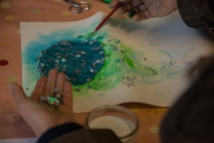

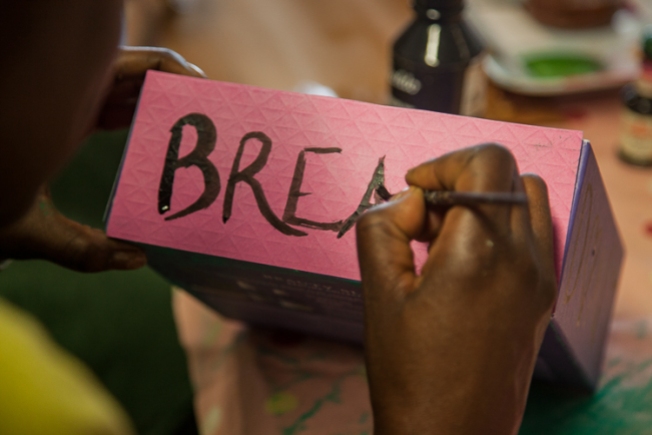












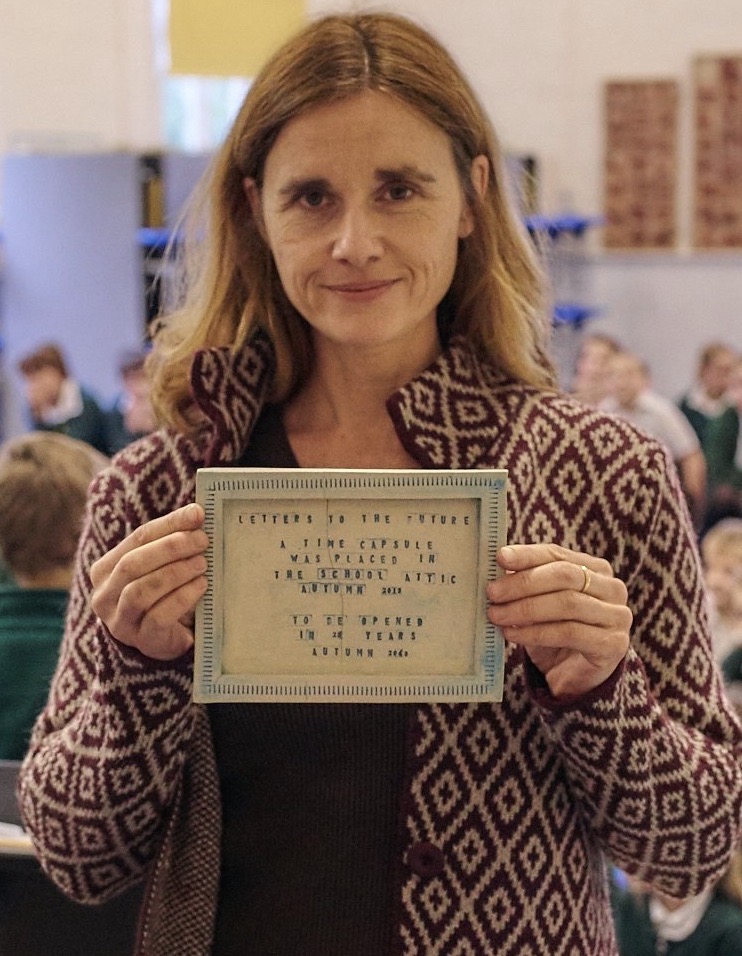









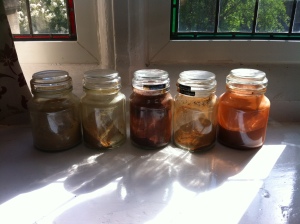






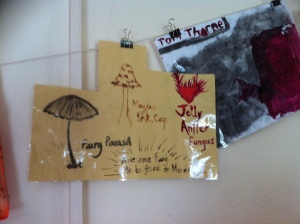


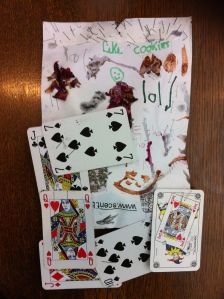





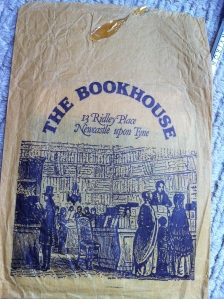

You must be logged in to post a comment.